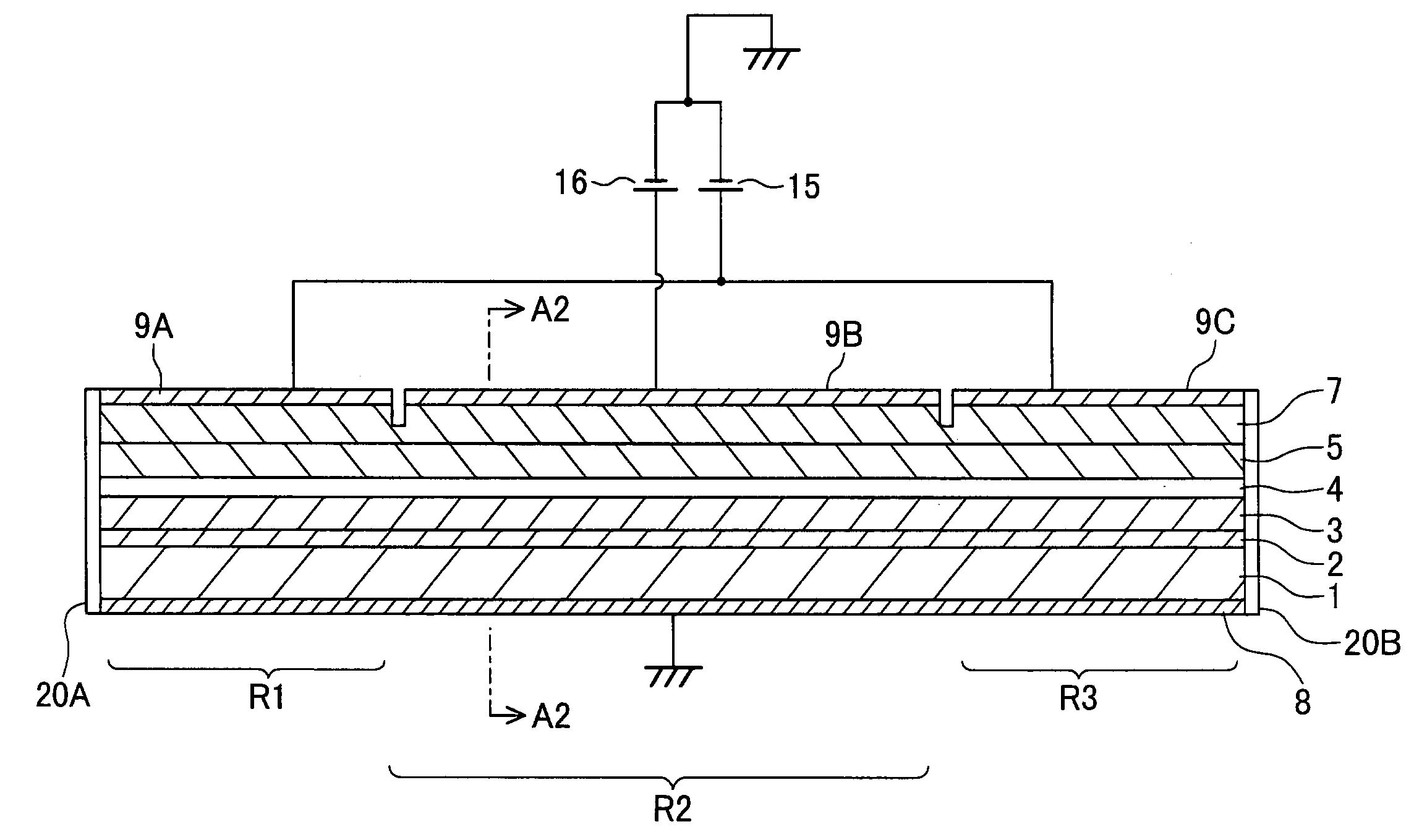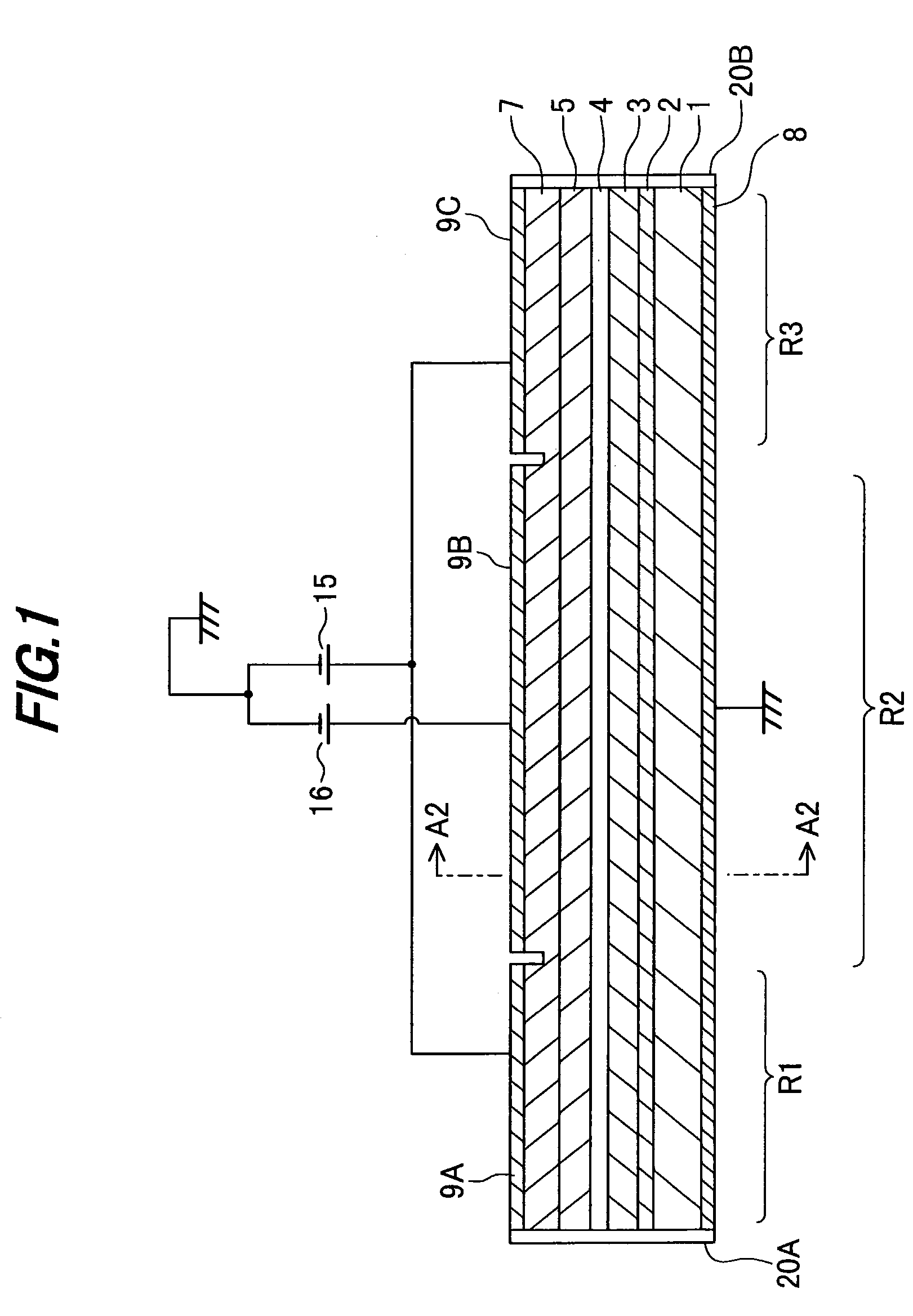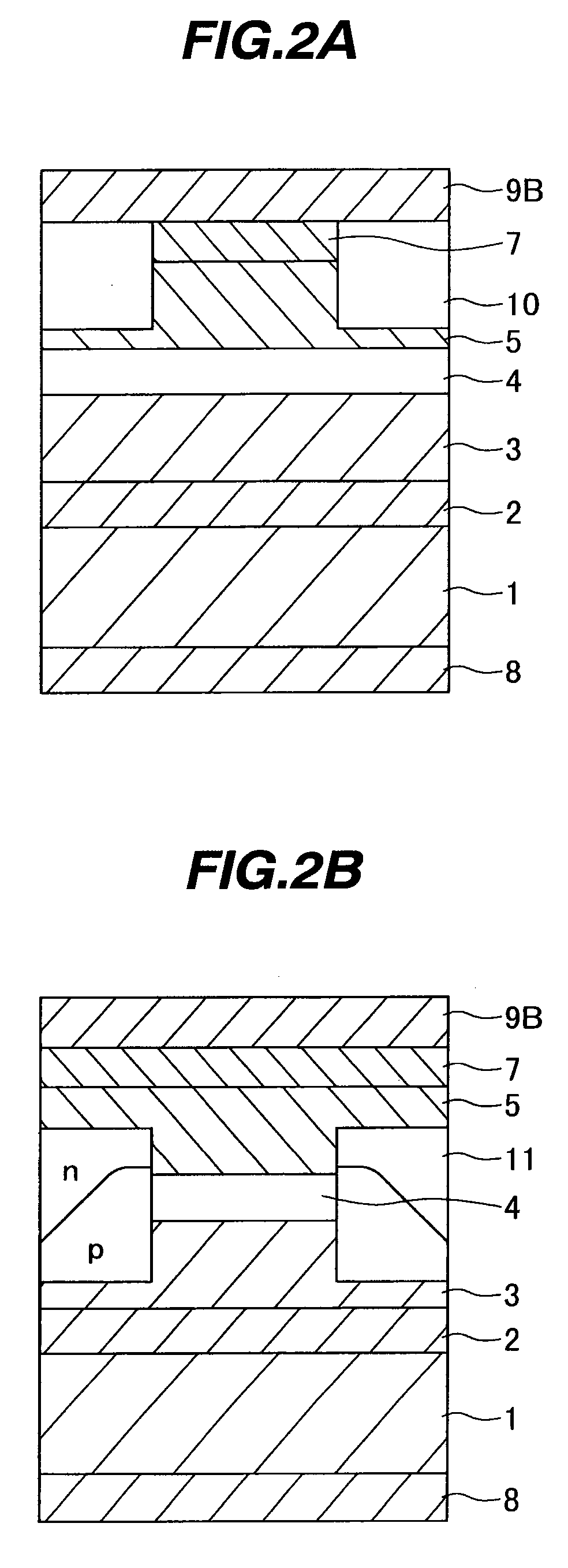Semiconductor optical amplifier suitable for coarse WDM communications and light amplification method
a technology of optical amplifier and semiconductor, applied in the structure of semiconductor amplifier, semiconductor laser, laser, etc., can solve the problem that the semiconductor optical amplifier is difficult to be used as a broadband optical amplifier, and achieve the effect of suppressing gain saturation, reducing gain difference, and constant gain
- Summary
- Abstract
- Description
- Claims
- Application Information
AI Technical Summary
Benefits of technology
Problems solved by technology
Method used
Image
Examples
first embodiment
[0047]FIG. 1 is a cross sectional view of a semiconductor optical amplifier of the first embodiment as viewed along a direction parallel to the light propagation direction. On a substrate 1 made of n-type InP, a buffer layer 2 made of n-type InP and having a thickness of 100 to 200 nm is epitaxially grown. The buffer layer 2 is used for providing an underlayer surface having good crystallinity. If the crystallinity of the substrate 1 is good, the butter layer 2 may be omitted. On the buffer layer 2, a clad layer 3 is formed which is made of n-type InP and has a thickness of 3 μm. The n-type impurity concentration of each of the substrate 1, buffer layer 2 and clad layer 3 is 1×10 18 cm−3 for example.
[0048]On the clad layer 3, an active layer 4 of 0.5 μm in thickness is formed. The active layer 4 contains quantum dots having a tensile strain. The structure of the active layer 4 will be later described.
[0049]On the active layer 4, a clad layer 5 of p-type InP is epitaxially grown to a...
second embodiment
[0090]It can be seen from the comparison of FIG. 10 with FIG. 6 that the light intensity in the wavelength range from 1100 to 1200 nm is weak. In the second embodiment, because each of the regions having a high current linear density (e.g., regions R11, R13, . . . ) is short, the light intensity does not rise too high even if light in the wavelength range from 1100 to 1200 nm is amplified in the regions having the high current linear density. It is therefore possible to prevent light in the wavelength range from 1100 to 1200 nm from being amplified excessively. If light in the wavelength range from 1100 to 1200 nm is amplified too much, gain saturation occurs.
[0091]As seen from FIG. 9, the gain coefficient in the regions R11 to R19 is generally constant along the light propagation direction (vertical direction in FIG. 9). Namely, there is no gain saturation. This is because light amplification is suppressed in the wavelength range from 1100 to 1200 nm.
[0092]FIG. 11A shows the relati...
PUM
 Login to View More
Login to View More Abstract
Description
Claims
Application Information
 Login to View More
Login to View More - R&D
- Intellectual Property
- Life Sciences
- Materials
- Tech Scout
- Unparalleled Data Quality
- Higher Quality Content
- 60% Fewer Hallucinations
Browse by: Latest US Patents, China's latest patents, Technical Efficacy Thesaurus, Application Domain, Technology Topic, Popular Technical Reports.
© 2025 PatSnap. All rights reserved.Legal|Privacy policy|Modern Slavery Act Transparency Statement|Sitemap|About US| Contact US: help@patsnap.com



